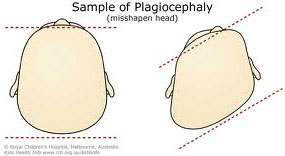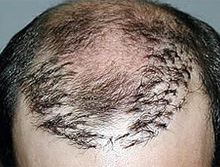Hi Doctor. Thank you for having this great site!!
About 25years ago I had a HT using the hobby drill method. Now I have 3 rows of white plugs. I am like most of the others on this site and want to shave my head. I was wondering if you have ever considered a procedure to re-drill the plugs and suture them closed similar to the way you show it being done to patients for the top of their heads. I have spoken to other doctors and they want to cut the entire area out and suture it closed. They also state that it would take two or three procedures. Why can’t someone just re-drill and suture shut the area?

We have done what you described — taking each of the old style hair plugs out one-by-one and suturing each wound closed. We have also cut out the entire row and sutured it all closed. And we’ve even done a combination of both. Here’s a step-by-step story of the process one man took to repair his pluggy hairline. It took multiple surgeries to complete his repair, with the first procedure being a removal of a row of plugs, and the second procedure being individual removal of some of the remaining plugs.
My point is, everybody is different and every treatment plan for each individual is unique. In the end, find the doctor that you trust and ask to see some before after results of these repair procedures. You may even ask to speak to their former patients or meet them. Good luck.

 The reason why hair transplants work in men is because men don’t usually bald in the donor area (back of scalp). And since men don’t bald in the back of the scalp, the scar from strip surgery isn’t shown.
The reason why hair transplants work in men is because men don’t usually bald in the donor area (back of scalp). And since men don’t bald in the back of the scalp, the scar from strip surgery isn’t shown.
 For those that aren’t familiar with
For those that aren’t familiar with  At
At